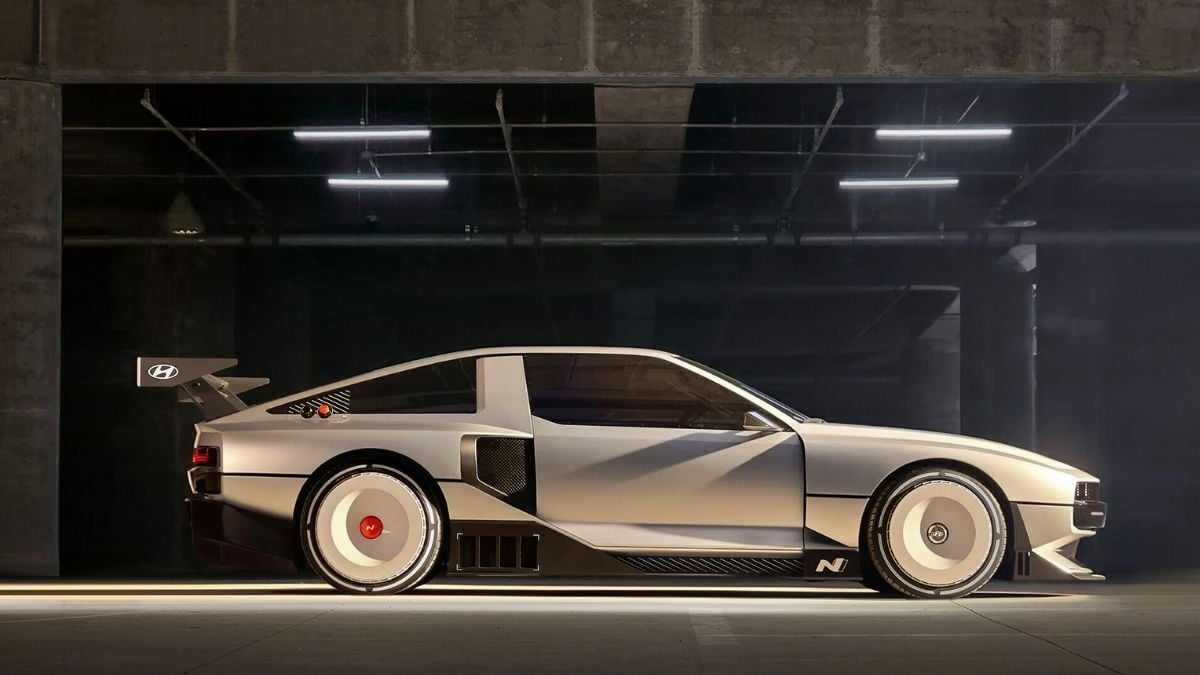The Hyundai N Vision 74 Hydrogen rolling lab sports car is amazing looking, reminds me a bit of an upscaled DeLorean spots car. This prototype on spec isn’t as impressive, for an electric, as you might think with a 0-60 time at a modest, for an electric, 4 seconds. But this is a hydrogen electric car, so small battery and a cutting-edge Hydrogen fuel cell instead of the massive battery required by EVs. But does Hydrogen even make sense now? I’d argue it doesn’t and here is why.
The Hydrogen Advantages
Hydrogen does have a number of advantages that includes it can be created locally (you don’t need to truck it around, though economies of scale would suggest that might be cheaper, but this means it can be used in places where you can’t ship in gasoline regularly. You can have a home hydrogen station, but they are very expensive, and the exhaust that comes from a hydrogen fuel cell or converted engine is mostly water. So, it can use the infrastructure in place for gas, though you’ll need fresh tanks, you don’t need power-stealing anti-smog gear, it refuels faster than an electric car charges today, and the crash of the Hindenburg aside, it is comparatively safe.
Because of the massive battery issues we’ve been dealing with the past several years, hydrogen would have been a better choice even for Tesla, but those years have now passed, and things have changed to a degree that hydrogen just isn’t competitive with electricity.
Infrastructure
I do believe that Hydrogen would have been a better initial path for electric vehicles due to its ability to be fueled faster, work within a gas station ecosystem, and because it can work with both new electric vehicles, and modified gas vehicles.
However, no one has a hydrogen generator in their home (they are pricey) at all let alone one that could scale to the needs of an electric vehicle. We’ve massively expanded the public charger network while the hydrogen network that currently exists is mostly getting dismantled (and it wasn’t big at all to begin with), and you can’t fuel multiple cars sequential or the hydrogen nozzle will freeze up and not pass the hydrogen gas into the car.
So, it has many of the disadvantages electric cars initially enjoyed before public chargers were more widely installed, employers and homes generally can’t afford to install hydrogen refueling stations, and if you think charging an electric car is annoying at a public charging station, wait until you are the third car in-line for a Hydrogen fueling station and have to wait for the nozzle to thaw out before you charge.
And while much like the initial issues with the GM electric car, the EV1, were largely fixed (by the way this car was incredibly popular at its time but the buyers were selected to drive this car to make sure the short-range would work for them), the same isn’t true of hydrogen vehicles which appear only slightly better off than the EV1 was when it was operated between 1996 and 1999. The subsequent Tesla Model 2, which was around a decade later, was a ton better from performance to charging speed.
Wrapping Up:
The Hyundai N Vision 74 prototype is cool looking, though it lacks the performance of even the Hyundai Ioniq 5 N (0-60 in 3.3 seconds) and isn’t as practical as that fast hatch. I think the boat has sailed for Hydrogen for personal transportation because we’ve come so far with pure electric technology and Hydrogen infrastructure not only isn’t good enough, but it also is getting worse over time given Shell’s effort to dismantle their Hydrogen fueling station.
So I think the Hyundai N Vision 74 does represent a future, it is not on the future path we are on and I don’t see a way to now flip from electricity to hydrogen at all let alone in the time left before we fix the battery problem now expected to be around 2029.
Rob Enderle is a technology analyst covering automotive technology and battery developments at Torque News. You can learn more about Rob on Wikipedia, and follow his articles on Forbes, on X, and LinkedIn.





